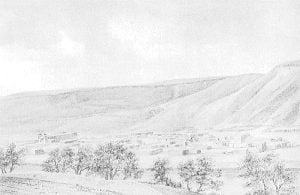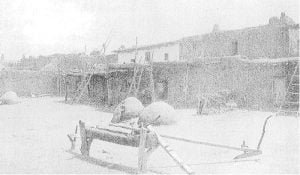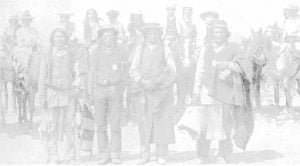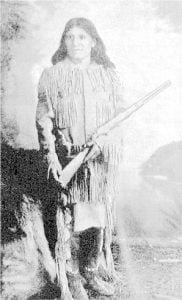San Felipe Pueblo
At my first visit to San Felipe I was denied entrance to the pueblo, owing to a secret dance which was in progress. The next day, coming on invitation, I found the council of principals already assembled and anxious to make amends for the inhospitable treatment of the day before. We discussed 2 large tracts of land, each available for cultivation, one needing an extension of the acequia and the other a boom in the river, Upon leaving the line of San Domingo, along which every foot was cultivated, one enters a tract of the same sort of land, 2,500 … Read more







